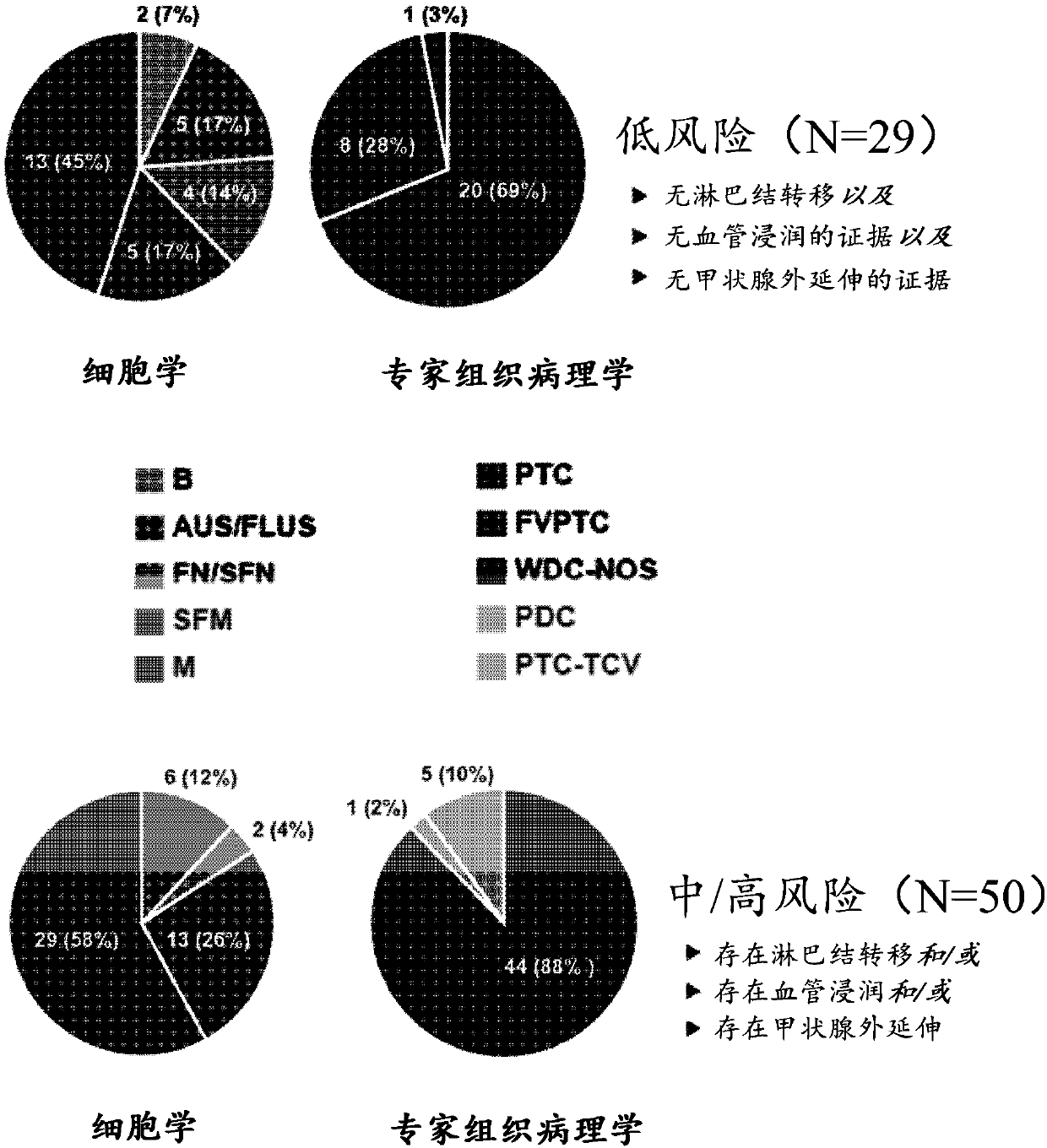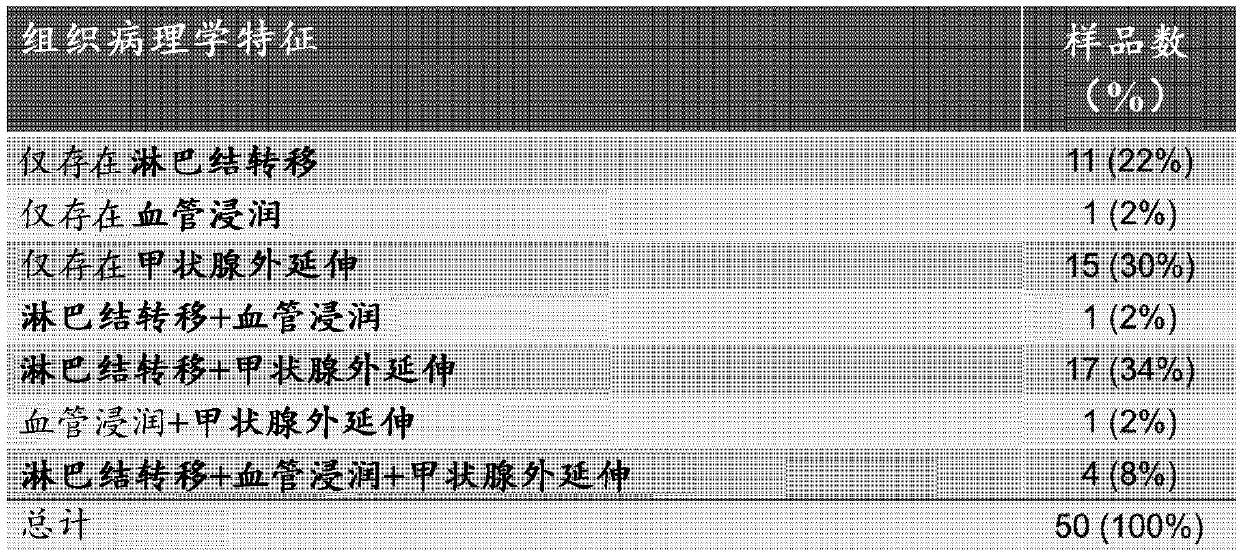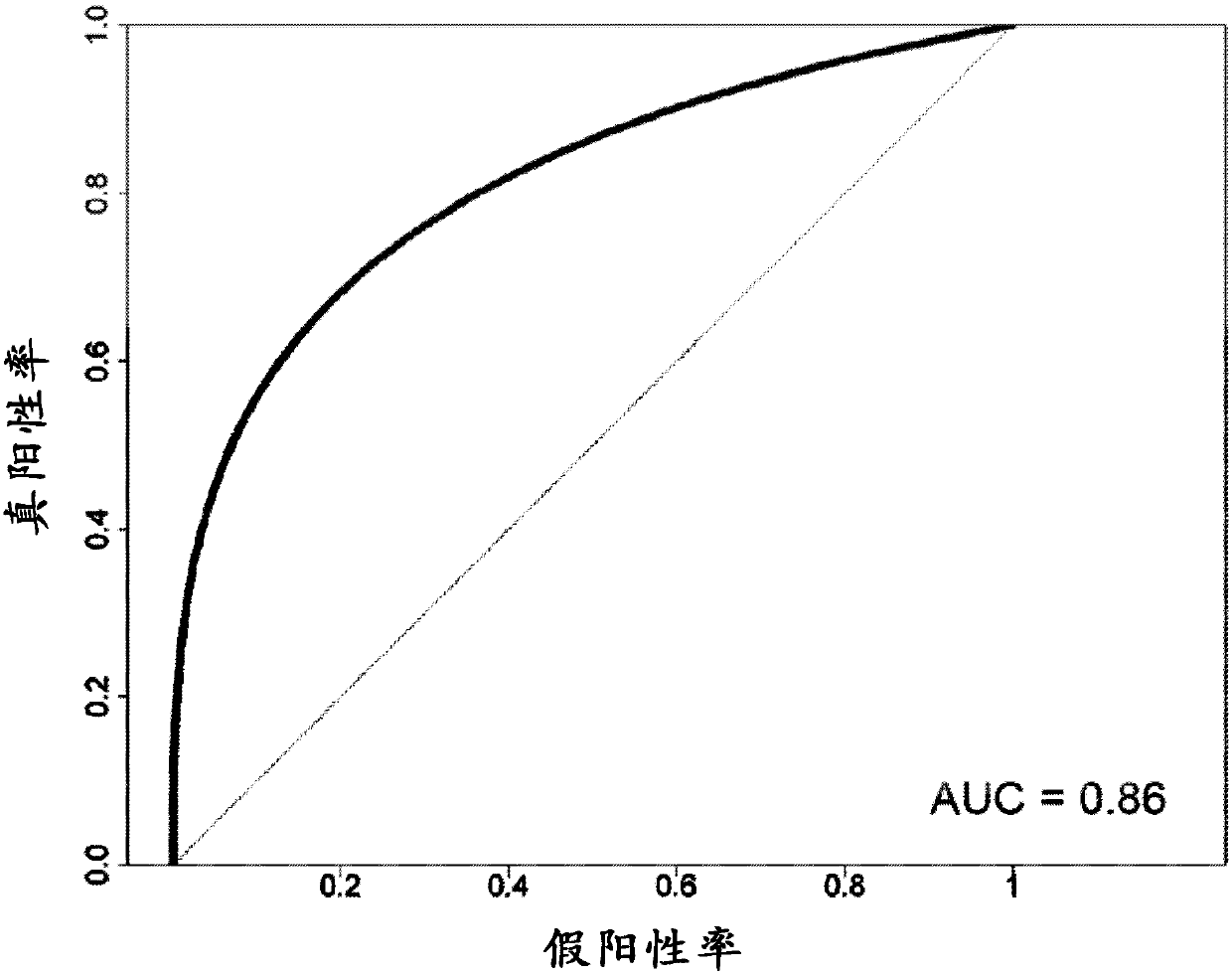Methods for assessing the risk of disease occurrence or recurrence using expression level and sequence variant information
A disease occurrence and expression level technology, applied in biochemical equipment and methods, informatics, sequence analysis, etc., can solve problems such as inaccurate assessment, and achieve the effect of improving risk prediction
- Summary
- Abstract
- Description
- Claims
- Application Information
AI Technical Summary
Problems solved by technology
Method used
Image
Examples
Embodiment 1
[0154] Example 1: Risk stratification of samples using a risk classifier
[0155] The current risk-adjusted approach to the initial management of thyroid cancer is based on postoperative classification using the 2009 American Thyroid Association (ATA) grading system to classify subjects as intermediate-high or low-risk. Although this anatomical grading system can be used clinically, it cannot be accurately assessed prior to thyroidectomy and cannot include any molecular predictors of subject outcome. This study determined whether transcriptional data obtained during diagnostic fine-needle aspiration (FNA) of malignant thyroid nodules could be used to improve risk stratification prior to thyroid surgery.
[0156] FNA material from samples collected preoperatively (n = 79) and postoperatively diagnosed by an expert panel as papillary thyroid carcinoma (PTC), including classical histological subtypes ( figure 1 and figure 2 ). Each patient was classified as "low risk" or "...
Embodiment 2
[0158] Example 2: Cross Validation Model
[0159] Indeterminate thyroid nodules were tested with a gene expression classifier (GEC) with mutation panels to determine whether preoperative risk stratification was improved by the use of machine learning. Figure 10 is a flowchart showing training marker determination. AfirmaGEC version 1 training markers were used to distinguish histologically benign from histologically malignant samples. Histologically malignant samples were further differentiated into low risk and intermediate / high risk using the American Thyroid Association (ATA) risk training markers. Intermediate / high risk features include lymph node metastasis, vascular invasion, extrathyroidal extension, or any combination thereof. The risk training sample group is in figure 1 shown in . Percentage of samples with intermediate / high risk of developing histological features in figure 2 shown in . 10-fold cross-validation was performed to evaluate the area under the...
Embodiment 3
[0160] Example 3: Mutation Analysis
[0161] Fine needle aspiration (FNA) samples (n = 81) were collected and diagnosed as malignant (papillary thyroid carcinoma (PTC), multifocal papillary thyroid carcinoma (mPTC), papillary thyroid carcinoma Follicular variant (FVPTC), papillary thyroid carcinoma with hypercellular features (PTC-TCV), medullary thyroid carcinoma (MTC), well-differentiated carcinoma-not otherwise specified (WDC) -NOS), hepatocellular carcinoma (HCC), follicular carcinoma (FC)) or benign (benign familial neutropenia (BFN), fibroadenoma (FA), hepatocellular adenoma (HCA ), hyalinizing beam adenoma (HTA), Leydig cell tumor (LCT)). Histopathologically plausible surgical tissue samples (n=57) were also analyzed. Serial series of indeterminate FNAs (n=101 ) from Clinical Laboratory Improvement Amendment (CLIA) laboratories without histopathology were also analyzed. Next-generation sequencing (NGS) was performed on the samples, and 14 genes were assessed with i...
PUM
 Login to View More
Login to View More Abstract
Description
Claims
Application Information
 Login to View More
Login to View More - R&D
- Intellectual Property
- Life Sciences
- Materials
- Tech Scout
- Unparalleled Data Quality
- Higher Quality Content
- 60% Fewer Hallucinations
Browse by: Latest US Patents, China's latest patents, Technical Efficacy Thesaurus, Application Domain, Technology Topic, Popular Technical Reports.
© 2025 PatSnap. All rights reserved.Legal|Privacy policy|Modern Slavery Act Transparency Statement|Sitemap|About US| Contact US: help@patsnap.com



